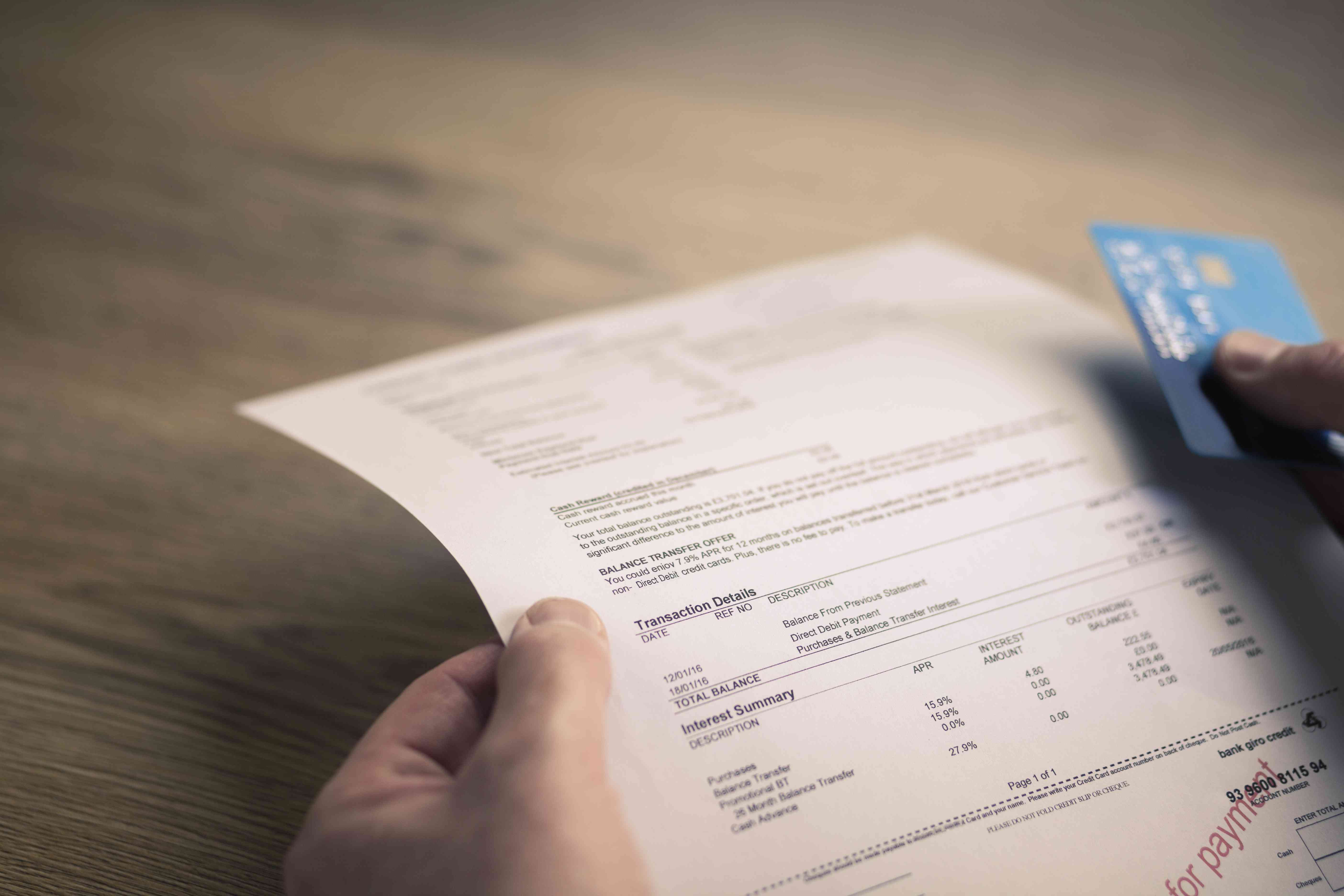Home>Finance>How To Find Out How Many Student Loan Payments I Have Made


Finance
How To Find Out How Many Student Loan Payments I Have Made
Published: October 20, 2023
Find out how many student loan payments you've made with this helpful finance guide. Take control of your financial future today!
(Many of the links in this article redirect to a specific reviewed product. Your purchase of these products through affiliate links helps to generate commission for LiveWell, at no extra cost. Learn more)
Table of Contents
Introduction
Managing student loans can be a challenging task, especially when it comes to keeping track of payment history. As borrowers, it is important to stay informed about how many student loan payments you have made to accurately track your progress towards paying off your debt.
Knowing the number of payments made can provide you with valuable insights into your financial journey and help you plan for the future. Whether you are preparing to refinance your loans, apply for loan forgiveness, or simply want to stay on top of your financial obligations, understanding how to find out how many student loan payments you have made is crucial.
In this article, we will discuss several methods to help you gather the necessary information. By reviewing your loan records, contacting your loan servicer, and utilizing online tools, you will be equipped with the knowledge needed to confidently track your student loan payments.
Let’s dive into the different ways you can find out how many student loan payments you have made.
Gathering Loan Information
Before you can determine the number of student loan payments you have made, it is essential to gather all the necessary loan information. This includes the name of your loan servicer, the type of loan (federal or private), and any relevant account numbers or login credentials.
If you are unsure about who your loan servicer is or need assistance with gathering your loan details, you can start by visiting the National Student Loan Data System (NSLDS) website, which is the U.S. Department of Education’s central database for Federal Student Aid. By logging in with your FSA ID, you can access a comprehensive summary of your federal student loans, including specific loan details, such as the servicer’s name and contact information.
For private loans, refer to your loan documents or contact the financial institution directly to obtain the necessary information.
Once you have gathered all the relevant loan information, you can proceed with the following methods to find out how many student loan payments you have made.
Contacting Loan Servicer
One of the most direct ways to find out how many student loan payments you have made is by contacting your loan servicer. Your loan servicer is responsible for managing your loan account and can provide you with accurate and up-to-date information regarding your payment history.
You can typically find the contact information for your loan servicer on your monthly loan statement or by logging into your online account. If you are unsure about who your loan servicer is, you can check the NSLDS website mentioned earlier, which will display the servicer’s name and contact details.
When reaching out to your loan servicer, be prepared to provide your personal identification information and account details to verify your identity. You can inquire about the number of payments you have made, the remaining balance on your loan, and any other relevant information you may need.
Remember to stay organized and keep a record of any correspondence with your loan servicer to ensure accurate documentation of your loan payment history.
If you are having trouble contacting your loan servicer or are not satisfied with the provided information, there are alternative methods to track your student loan payments.
Checking Online Account
If you have an online account with your loan servicer, it can be a convenient way to access your loan information, including your payment history. Most loan servicers offer online platforms where borrowers can securely login and view their loan details.
Log in to your online account and navigate to the “Payment History” or “Loan Details” section, where you should be able to find a summary of your past payments. This will typically include the date of each payment, the amount paid, and the status of the payment (e.g., “paid” or “pending”). By going through your payment history, you can count the number of payments you have made so far.
If you are not already enrolled in online account access, you may need to sign up for it. Visit your loan servicer’s website and look for an option to register or create an account. Follow the instructions provided, which may include verifying your identity and setting up a username and password.
Once you have gained access to your online account, take some time to explore the various features and sections available. Besides payment history, you may find additional resources and tools to help you manage your student loans effectively, such as repayment calculators and options for setting up automatic payments.
Checking your online account regularly can also help you stay informed about any updates or changes to your loan, ensuring that you have the most accurate and recent information at your fingertips.
If you encounter any difficulties while accessing or navigating your online account, don’t hesitate to reach out to your loan servicer’s customer service for assistance.
Reviewing Bank Statements
Another way to determine the number of student loan payments you have made is by reviewing your bank statements. Your bank statements provide a comprehensive record of all the transactions made from your bank account, including your loan payments.
Take some time to gather your bank statements from the time you started making student loan payments. Look for any payments made to your loan servicer or any transactions related to your student loans. By identifying these payments and counting them, you can determine the number of payments you have made.
When reviewing your bank statements, pay attention to the following details:
- Date of the payment: Note down the date when each loan payment was made.
- Amount of the payment: Make a note of the payment amount for each transaction.
- Description of the payment: Look for any specific descriptions that indicate the payment was related to your student loan.
While this method may require some effort and time to go through multiple statements, it can provide you with an accurate count of your student loan payments.
Additionally, reviewing your bank statements allows you to gain a deeper understanding of your overall financial situation and identify any discrepancies or errors in your loan payments. If you notice any inconsistencies or suspect missing payments, it is essential to contact your loan servicer immediately to rectify the issue.
By maintaining a systematic record of your bank statements, you can also use this information to cross-reference with other methods, such as contacting your loan servicer or checking your online account, to ensure the accuracy of your payment history.
Examining Payment History
An effective way to find out how many student loan payments you have made is by examining your payment history. Your loan servicer keeps a detailed record of all your loan payments, making it a reliable source for accurate information.
Contact your loan servicer and request a copy of your payment history. This document will provide you with a comprehensive overview of each payment you have made, including the date, amount, and status of each payment.
Once you have received your payment history, meticulously go through each entry and count the number of payments made. This method ensures that you have an accurate count directly from the loan servicer.
Pay attention to any additional information provided in the payment history, such as the breakdown of principal and interest payments. This information can be valuable to understand how your payments have been applied to your loan balance over time.
If your loan servicer does not provide a payment history upon request, ask if they have any other means of verifying your payment history. Some loan servicers may have online portals or tools that allow you to access your payment history directly.
By examining your payment history, you can have a comprehensive understanding of your repayment progress and identify any discrepancies or missing payments. If you notice any irregularities, reach out to your loan servicer for clarification and resolution.
Regularly reviewing your payment history is essential to stay on top of your student loan obligations and ensure that you are making consistent and accurate payments towards your loan balance.
Utilizing Loan Tracking Tools
In today’s digital age, there are several loan tracking tools and applications available that can assist you in managing your student loans and keeping track of your payment history.
One such tool is the Student Loan Dashboard, a web-based platform that allows borrowers to track their student loan payments and monitor their progress. By linking your loan accounts to the dashboard, you can access a comprehensive overview of your loan details, including payment history, remaining balance, and interest accrued.
Another popular option is the Mint app, a personal finance tool that offers budgeting and tracking features. Mint allows you to link your loan accounts and view your loan payment history in one place. You can also set up payment reminders to ensure that you never miss a payment.
Other loan tracking tools include Unbury.me, which helps you visualize your loan progress and create a repayment plan, and LoanBuddy, which provides a comprehensive analysis of your federal student loans, including payment history and future projections.
These tools can be a convenient and efficient way to track your student loan payments. Not only do they provide a holistic view of your loans, but they also offer features such as payment reminders, customization options, and goal-setting tools.
It’s important to note that while these loan tracking tools can give you an overview of your payment history, it is still advisable to cross-reference the information with your loan servicer’s records to ensure accuracy.
By utilizing loan tracking tools, you can simplify the process of monitoring your loan payments and gain better control over your student loan repayment journey.
Consulting with a Financial Advisor
If you find it challenging to gather accurate information on your student loan payments or want expert advice on managing your loans, consulting with a financial advisor can be beneficial.
A financial advisor specializes in personal finance and can provide you with valuable insights and guidance tailored to your specific situation. They can help you navigate the complexities of student loan repayment and offer strategies to optimize your financial goals.
When consulting with a financial advisor, be prepared to share your loan details, including loan type, interest rates, and payment history. This will help them evaluate your current situation and provide you with customized advice.
A financial advisor can help you determine the number of student loan payments you have made by reviewing your loan statements, payment history, and other relevant documents. They may also use sophisticated financial planning tools to project the impact of different repayment strategies on your overall financial well-being.
Moreover, a financial advisor can offer guidance on various aspects of your student loans, such as navigating loan forgiveness programs, exploring refinancing options, or identifying opportunities to optimize your payment strategy.
Keep in mind that consulting with a financial advisor may incur costs, so it’s important to inquire about their fees and services beforehand. Make sure to work with a reputable and qualified advisor who specializes in student loans and has a strong background in personal finance.
By consulting with a financial advisor, you can gain professional insights, develop a comprehensive repayment plan, and have confidence in your financial decisions regarding your student loans.
Keeping Track of Future Payments
Once you have determined the number of student loan payments you have made, it is crucial to stay organized and keep track of your future payments. This will help you ensure that you continue to make timely payments towards your loan and stay on track with your repayment plan.
Here are some tips for effectively keeping track of future loan payments:
- Create a repayment calendar: Use a digital or physical calendar to mark the due dates of your upcoming loan payments. This will serve as a reminder and help you stay ahead of your payment schedule.
- Set up automatic payments: Consider setting up automatic payments with your loan servicer or through your bank. This will ensure that your payments are made on time without the risk of forgetting or incurring late fees. It also helps to establish a consistent payment habit.
- Monitor your bank account: Regularly review your bank account to confirm that your loan payments have been successfully processed. If you notice any issues or discrepancies, contact your loan servicer immediately for resolution.
- Communicate with your loan servicer: Stay in touch with your loan servicer and promptly inform them of any changes in your contact information or financial circumstances. This will help ensure that you receive important updates regarding your loan and avoid any potential issues.
- Keep records of payments: Maintain a file or digital folder where you can store documentation of your loan payments, such as receipts, confirmation emails, and bank statements. This will serve as a record for your own reference and help resolve any disputes or discrepancies in the future.
It is essential to proactively manage your student loan payments to minimize the risk of missing payments or incurring unnecessary fees. By staying organized and staying on top of your future payments, you can maintain a solid repayment strategy and steadily progress towards paying off your student loans.
Conclusion
Managing student loan payments can sometimes feel overwhelming, but by utilizing various methods and resources, you can easily find out how many student loan payments you have made. Whether you choose to contact your loan servicer, check your online account, review bank statements, examine payment history, utilize loan tracking tools, or consult with a financial advisor, each approach will provide you with valuable insights into your repayment progress.
Keeping track of your loan payments is not only important for monitoring your progress, but it also helps you stay organized and ensure there are no discrepancies or errors in your repayment history. Consistently making your payments on time and staying up to date with your loan obligations will help in building a strong financial foundation and ultimately achieving student debt freedom.
Remember to stay proactive in managing your student loans, communicate with your loan servicer, and take advantage of available tools and resources. By staying informed and on top of your payments, you can approach your student loan repayment journey with confidence and work towards a successful financial future.














